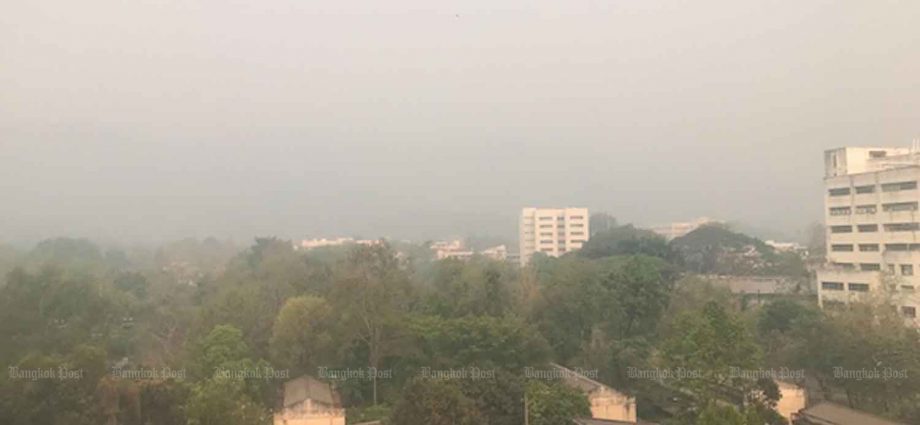People in Chiang Mai urged to stay indoors and work from home

Levels of particulate matter 2.5 micrometres or less in diameter (PM2.5) have reached the “unhealthy” red zone throughout the North and the upper Northeast, with the highest level exceeding the safe threshold of 50 microgrammes per cubic metre (µg/m³) by over eight times, as people in Chiang Mai have been urged to stay indoors and work from home at this time.
– North –
The Pollution Control Department (PCD) reported that PM2.5 levels in the North ranged from 94 to 416 µg/m³ as of 11am on Friday. The lowest was in tambon Nai Muang of Phitsanulok’s Muang district. The highest was in tambon Huai Kone of Nan’s Chalerm Prakiat district.
Elsewhere in the North, PM2.5 readings were 384 μg/m³ in tambon Wiang Tai of Mae Hong Son’s Pai district; 340 μg/m³ in tambon Wiang Phang Kham of Chiang Rai’s Mae Sai district; and 321 μg/m³ in tambon Wiang of Chiang Rai’s Chiang Khong district.
– Upper Northeast –
In the upper Northeast, the highest level at 220μg/m³ was reported at tambon Meechai in Muang district of Nong Khai province.
Elsewhere in the region, PM2.5 readings were 212 μg/m³ in tambon Kud Pong of Loei’s Muang district; 130 μg/m³ in tambon Bueng Kan of Bueng Kan’s Muang district; 121 μg/m³ in tambon Mak Khaeng of Udon Thani’s Muang district; and 117 μg/m³ in tambon Lamphu of Nong Bua Lam Phu’s Muang district.
– Work from home –
Late Thursday night, Chiang Mai governor Nirat Pongsitthithaworn ordered all governmental organisations in the province to have their officials work from home, except for those providing direct public services.
The governor also urged people in the northern province to stay indoors and work from home to protect themselves and reduce the health impact from PM2.5 particles.
Over the past 24 hours, Chiang Mai’s Muang district reported a PM2.5 reading of 233 µg/m3.
PCD director-general Pinsak Suraswadi attributed the accumulated air pollution to local forest fires, hotspots in neighbouring countries and stagnant air.
Thick smog is expected to remain in the North, especially in border provinces, until April 14, he said.
On Friday morning, the air monitoring website IQAir ranked Chiang Mai as the most polluted major city in the world, ahead of regular hotspots such as Delhi and Lahore.
Levels of the most dangerous PM2.5 particles — so tiny they can enter the bloodstream — were more than 66 times the World Health Organization’s annual guideline, according to IQAir.

Air quality map of Thailand on Friday morning. (Screenshot: IQAir).
Thailand has been choking on a spike in air pollution since the start of the year, caused in part by seasonal agricultural burning.
Nearly two million people have needed hospital treatment for respiratory conditions caused by air pollution this year, according to the Public Health Ministry.
Officials previously warned Bangkok residents to stay indoors and work from home in February as the capital was covered with harmful haze.

